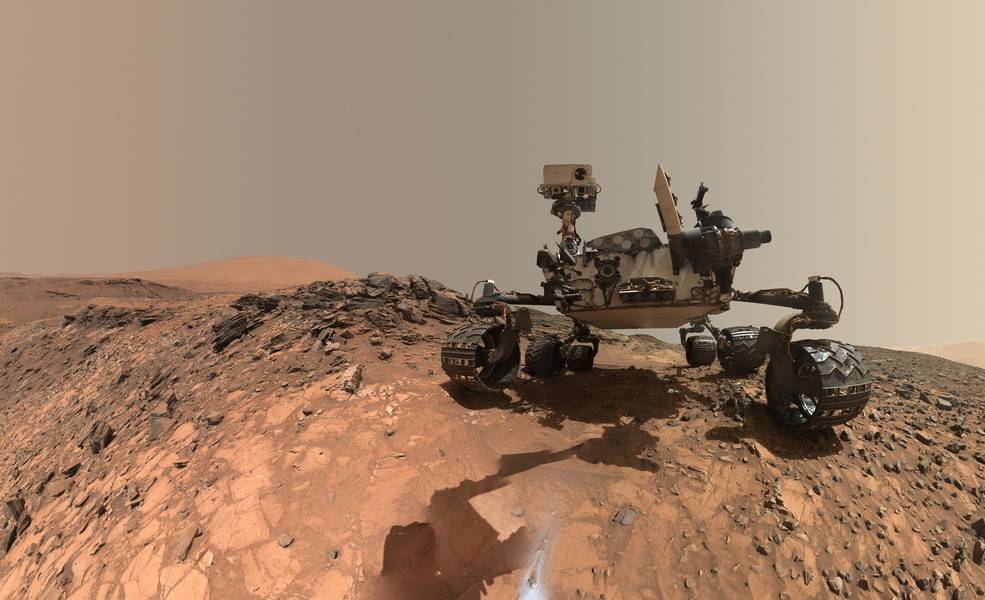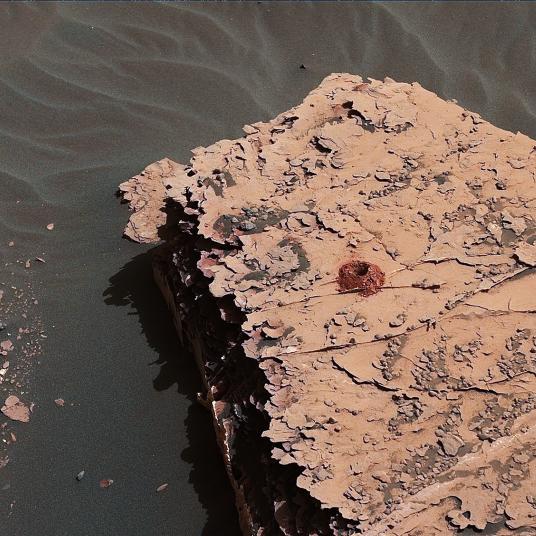NASA’s Rover finds ‘Building Blocks of Life’ on Mars!
As human efforts to find life on Mars continue to escalate, the achievements are more likely to fall in humanities favor. On Friday NASA revealed that its Curiosity rover has found new evidence preserved in rocks on Mars that suggests the planet could have supported ancient life.

Do you have similar website/ Product?
Show in this page just for only
$2 (for a month)

0/60
0/180
NASA?s Rover finds ?Building Blocks of Life? on Mars! 


Friday, 8th June
As human efforts to find life on Mars continue to escalate, the achievements are more likely to fall in humanities favor. On Friday NASA revealed that its Curiosity rover has found new evidence preserved in rocks on Mars that suggests the planet could have supported ancient life, the Red Planet could have building blocks of life, the Curiosity rover shows. NASA posted the results from its Curiosity rover that gathers samples from the surface of Mars. The US space agency announced Mars has the building blocks of life, in a discovery that could suggest the planet was once inhabited - or even still is today.

NASA's Curiosity rover drilled this two-inch-deep hole in a Martian rock as part of its examinations of the red planet's soil composition. Two landmark discoveries reveal organic carbon on the red planet, shaping the future hunt for life on Mars. Organic molecules preserved in 3.5 billion-year-old bedrock in Gale Crater suggest conditions back then may have been conducive to life. Organic molecules contain carbon and hydrogen, and also may include oxygen, nitrogen and other elements. While commonly associated with life, organic molecules also can be created by non-biological processes and are not necessarily indicators of life.
Thomas Zurbuchen, associate administrator for the Science Mission Directorate at NASA said;
?With these new findings, Mars is telling us to stay the course and keep searching for evidence of life, I?m confident that our ongoing and planned missions will unlock even more breathtaking discoveries on the Red Planet.?

Data from Curiosity reveal that billions of years ago, a water lake inside Gale Crater held all the ingredients necessary for life, including chemical building blocks and energy sources.
The rover has periodically sniffed Mars?s atmosphere since it landed, and in late 2014. In a sample analysis scientists describe the discovery of seasonal variations in methane in the Martian atmosphere over the course of nearly three Mars years, which is almost six Earth years. The variation was detected by Curiosity?s Sample Analysis at Mars (SAM). The results also indicate organic carbon concentrations on the order of 10 parts per million or more. Some of the molecules identified include thiophenes, benzene, toluene, and small carbon chains, such as propane or butene.

These findings are a good sign for future missions exploring the planet?s surface and subsurface. Major efforts are being made to get better results, The European Space Agency's ExoMars spacecraft, due to land in 2020, will be able to drill more than six feet down into pristine martian soils and examine samples with its on-board suite of instruments. And NASA?s scheduled Mars 2020 rover is slated to package soil samples for future missions to pick up and return to Earth.
Even now, the ExoMars mission is making strides. The mission's Trace Gas Orbiter arrived at Mars in late 2016, and it?s currently collecting data that will let scientists map Mars?s methane?and maybe even pinpoint its sources.
CONTINUE READING
NASA
Life of Mars
NASA Curiosity Rover Finds Buliding Blocks of Life
Life on the Red Planet
ExoMars
Curiosity Ranger
Internet
Science
Technology
International
Sandeep Semwal
Content Writer
